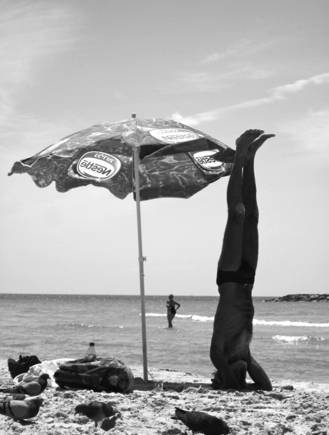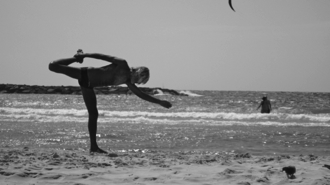 Beginning in 1968, Richard “Dick” Proenneke spent the majority of 30 years living alone in a log cabin he built by hand in the Alaskan wilderness. Throughout this time he lived off of the land and was mostly self-sufficient, catching or growing all of his food and chopping wood for warmth in the deathly freezing winters. By Dick’s own account, the wildlife and seasons gave him his repose, and such adoration of nature showed in his many journal entries that notated the life of the mountains and stars.
Beginning in 1968, Richard “Dick” Proenneke spent the majority of 30 years living alone in a log cabin he built by hand in the Alaskan wilderness. Throughout this time he lived off of the land and was mostly self-sufficient, catching or growing all of his food and chopping wood for warmth in the deathly freezing winters. By Dick’s own account, the wildlife and seasons gave him his repose, and such adoration of nature showed in his many journal entries that notated the life of the mountains and stars.
In another tale of personal isolation, a recent Reuters article wrote of a man who has been living as a nude hermit off the coast of Japan for over two decades. The 76-year-old Masafumi Nagasaki has his own reasons for seeking solitude, but has determined that the sun-drenched Sotobanari Island is where he will follow nature’s course until death.
On the beach of Tel Aviv, Israel, there is yet another interesting character pursuing his own unusual bliss. Known to a few of the locals as “Yoga Man,” he is a permanent fixture on the shoreline, only moving to calmly change poses. As a writer, spiritualist, and a purveyor of the eccentric, his intrigue caught my attention since my first arrival to the city nearly a year ago. Yoga Man was always within sight during my frequent visits to Banana Beach, from dawn to dusk (literally), rain or shine.
Such wayfarers of alternative lifestyles abound. Of course, seeking an unconventional or secluded existence doesn’t preclude or necessitate that one is following a spiritual life. But at the heart of these solo paths is an allure of the wild, one that beckons the primordial heart of man and tugs at his neatly hemmed, domesticated sleeves. The folks who pursue these wayward paths often garner a certain amount of perceived exceptionalism, particularly from those still traversing bus lines and calling bleak office desks home for much of the day.
The “Three Jewels of Buddhism”—the Buddha, the dharma, and the sangha—are what give guidance and refuge to the life of a Buddhist. The latter gem specifically entails a sense of support and community that is a shelter for those who are on a path that can be easily misunderstood— if not for its curious simplicity, then for its divergence from the norm.
Naturally, our ecology of personal relationships is most often structured around other human beings. Yet amidst the realizations of interdependence comes the awareness that community is intrinsic to everything, branching out and casting roots wherever we choose to look. Akin to fashioning musical instruments from everyday items and otherwise mute rubbish, meditation halls and yoga studios may be found or conjured in improbable places. Just as the most unlikely candidates can become makeshift gurus that offer us their unsolicited guidance, these self-defined “guerilla sanghas” can also be an amorphous entity, created in small interest groups or even discovered alone.
 Though all paths are replete with their own difficulties, both the Alaskan hermit and the Island nudist were afforded a degree of solitude, marked by unbridled wilderness. Even Yoga Man’s environs—even though he resides in a city—are fueled by the rhythm of the salty tide and the tourists that ebb and flow with the seasons.
Though all paths are replete with their own difficulties, both the Alaskan hermit and the Island nudist were afforded a degree of solitude, marked by unbridled wilderness. Even Yoga Man’s environs—even though he resides in a city—are fueled by the rhythm of the salty tide and the tourists that ebb and flow with the seasons.
For the backdrop of Yoga Man’s practice is the wilderness of an often noisy and indifferent seaside city—crowded yet emotionally distant. His presence on the beach is a curious juxtaposition, a rift between the expanse of the ocean and the dense high rise buildings; visually, a stark contrast betwixt an old soul’s spiritual repose and the scores of Dionysian beach dwellers. Enamored by this and drawn to what I presumed to be a fascinating story, I finally set out to interview my Mr. Mystique:
[I approached Yoga Man in broken Hebrew, with a discernible accent]
Me: “Greetings. Good day! May I sit and speak with you?”
Yoga Man: “I suppose.”
Me: “I am interested. How long have you been practicing yoga?”
YM: “For many years.”
Me: “How did you learn?”
YM: “From the life.”
Me: “Have you been to India?”
YM: “No.”
Me: “Can you describe why you do it, or what benefits you gain from it?”
YM: “It’s personal. I have nothing else I want to say about it.”
Me: “I understand. It just makes me happy to see you doing what you do.”
YM: “I enjoy it.”
We shared brief goodbyes. Within moments after the terse exchange he was again nestled in another pose.
Immediately, I felt intrusive. Following the awkward chat, I began re-evaluating my approach and conjuring excuses for why he wasn’t friendlier. Then the obvious dawned on me: I was just another face in the urban jungle. I was just another pixel at his everyday luncheon of More Unknown Faces. He had nothing to say to me, and didn’t pause to entertain my egotistical “but-I-alone-understand-you!” façade. The affair was anti-climatic, but the tough lesson was learned. Yoga Man thus became my own unintentional guru, brief in presence but lasting in effect.
Sitting there on the beach beside him all these months, I felt his story. I knew his reasons. Rain or shine, I shared his beautiful escape. At the end (this interview concluded my stint in Israel) I learned that who I saw was mostly my own reflection, presumptuous as it were. In this way, the looming cities can serve as an invaluable mirror. Perhaps the Greek lesson of Narcissus leaning over his reflection on the pool isn’t one so much about conceitedness and self-adoration, as it is about perceptual recursion.
Similarly, when these intrepid individuals head out into the great expanse—or squeeze into our narrow market alleyways, new mirrors are born for everyone. They blaze their own paths, and in watching their lifestyles we near a better understanding of our own.
As some other veteran shoe-stringers may humbly but hesitatingly reveal, the traveler’s itch can itself be a form of uneasiness. Despite the undeniable beauty of, say, an inviting hammock strung up on one of the South Pacific Islands, we are all subject to the process of static acclimation. At any location, we’re guaranteed to gradually embody the “grass is greener” mentality. This ultimately means encountering unique difficulties on whatever path we blaze. From the Alaskan wilderness to crowded post office lines, when push comes to shove we’re still compelled, at last, to grapple with the Self.
Thank you for subscribing to Tricycle! As a nonprofit, we depend on readers like you to keep Buddhist teachings and practices widely available.